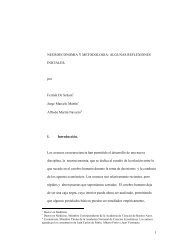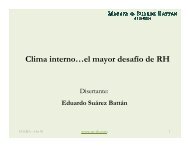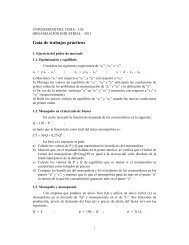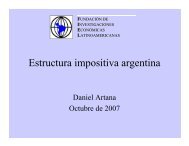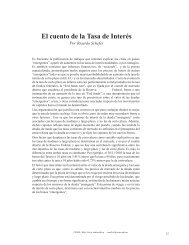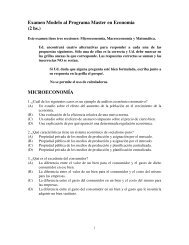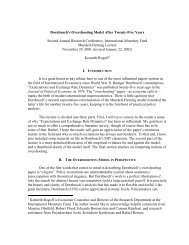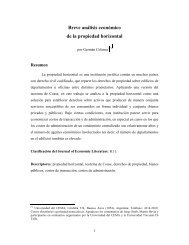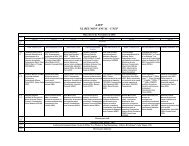Universidad del CEMA Master in Finance Research Work ...
Universidad del CEMA Master in Finance Research Work ...
Universidad del CEMA Master in Finance Research Work ...
Create successful ePaper yourself
Turn your PDF publications into a flip-book with our unique Google optimized e-Paper software.
S 2 = 1.1646<br />
F 1 = 1.0250<br />
F 2 = 1.1640<br />
In our example, we will calculate the basis risk with the data ex-post, while the hedge<br />
risk is actually associated with b 2 , which as of January 2, 2003 is unknown.<br />
b 1 = S 1 - F 1 = 1.0359 – 1.0250 = 0.0109<br />
b 2 = S 2 – F 2 = 1.1646 – 1.1640 = 0.0006<br />
The company is hedg<strong>in</strong>g the exchange-rate risk with a long position of futures<br />
contracts <strong>in</strong> Euros. Therefore, we can say that the effective price paid out by the<br />
company <strong>in</strong> the futures hedge is given by:<br />
S 2 + F 1 – F 2 = F 1 + b 2 = 1.0250 + 0.0006 = 1.0256<br />
We note that due to the fact that the company had to sell the futures contracts prior to<br />
expiration, <strong>in</strong> this particular case, the company had a loss s<strong>in</strong>ce it paid an additional<br />
amount of 0,0006 cents of US dollar per Euro.<br />
The yellow l<strong>in</strong>e <strong>in</strong> chart 5 shows this basis risk <strong>in</strong> US dollars dur<strong>in</strong>g the hedge period.<br />
Basis risk due to the number of traded contracts.<br />
A key factor affect<strong>in</strong>g the basis risk is the choice of the futures contract to be used for<br />
hedg<strong>in</strong>g. This choice has two elements:<br />
1. The choice of the asset underly<strong>in</strong>g the futures contract<br />
2. The choice of the futures contract ‘s expiration month<br />
When the maturity date of the company’s exposure does not exactly match the<br />
futures contract’s expiration date, a contract with a later expiration month is generally<br />
chosen <strong>in</strong> these circumstances. This is because futures prices are <strong>in</strong> some <strong>in</strong>stances<br />
quite erratic dur<strong>in</strong>g the expiration month. In general, basis risk <strong>in</strong>creases as the time<br />
difference between the hedge expiration and the futures contract’s expiration month<br />
<strong>in</strong>creases. However, <strong>in</strong> some situations the hedger may be <strong>in</strong>cl<strong>in</strong>ed to use shortmaturity<br />
futures contracts and roll them forward.<br />
In our example, the company hedged its EUR 10,400,000 exposure with 83 contracts<br />
of EUR 125,000. Therefore, it only hedged an amount <strong>in</strong> Euros of EUR 125,000 * 83<br />
contracts = EUR 10,375,000. The rema<strong>in</strong><strong>in</strong>g EUR 25,000 is then exposed to the<br />
exchange-rate risk.<br />
Without tak<strong>in</strong>g <strong>in</strong>terest rates <strong>in</strong>to account dur<strong>in</strong>g the hedge period and consider<strong>in</strong>g<br />
that the spot exchange rate as of January 2 was 1.0359 and as of October 20 was<br />
22



